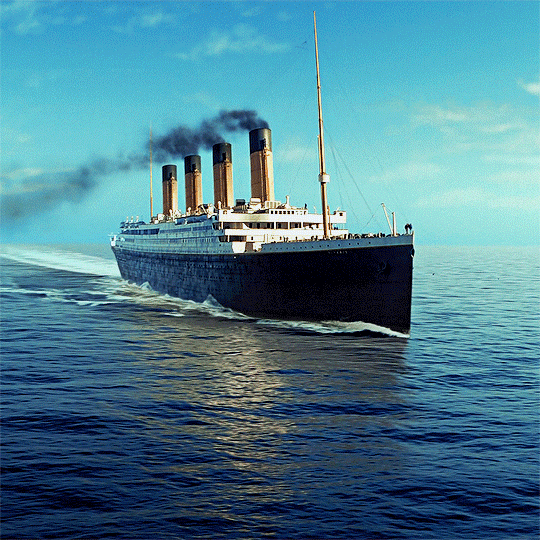Three Skills that Saved 700 Lives on Titanic
The Titanic was the most luxurious ship that world had seen in 1912
Many people have heard the story of how Titanic, the unsinkable ship, struck an iceberg on its maiden voyage and sank in 1912. More than 1500 people died in the tragedy.
But more than 700 survived – and their survival is down to the skills and efforts of ordinary people who did extraordinary things.
Here are three valuable skills that saved lives on Titanic.
1.Communication
It was just after midnight on April 15, 1912, when Harold Cottam, Carpathia’s wireless operator, overheard a batch of messages for the Titanic.
Although Titanic had already put a distress message of ‘CQD’, Cottam hadn’t heard it.
But he had heard Cape Cod sending messages to the Titanic. A lot of them.
He messaged Titanic at 12:21 am to let them know.
“I say Old Man, do you know there is a batch of messages coming through for you from MCC (MCC indicated Cape Cod)?”
A minute later Titanic responded: “CQD CQD.”
Cottam then confirmed what he heard.
“Shall I tell my captain? Do you require assistance?”
“Yes, come quick!” was the reply from Titanic.
Cottam immediately went to relay the message to Carpathia’s captain, Arthur Rostron.
He convinced Rostron he was sure he heard the message accurately, and that the ‘unsinkable’ Titanic needed urgent assistance.
Carpathia’s wireless operator Harold Cottam told his story to The New York Times, April 28, 1912
2. Leadership
When Captain Rostron heard Titanic was in distress, he quickly took action.
He turned Carpathia around before he knew the details of Titanic’s situation, and headed 60 miles toward the sinking ship.
He had to navigate through a dark night and ice-filled water to reach Titanic, and instructed the crew to make preparations immediately.
He posted extra lookouts, turned off heating to ensure maximum speed, and had the ship prepared for survivors.
He ordered his medical crew to stand by, while other crew members got blankets, food and drinks ready. He had crewmen in place to reassure passengers alarmed by the ship’s increased speed and change of direction.
The quick thinking, collaboration, and effort by the crew saved lives that night. Carpathia was able to obtain a speed of 17.5 knots as they raced toward Titanic, 3.5 knots faster than usual.
Rostron would later tell the US Senate Inquiry that he issued 23 orders that were successfully implemented before Carpathia reached Titanic’s lifeboats.
He was branded a hero, and he and the Carpathia crew were lauded on both sides of the Atlantic for their bravery.
Carpathia Captain Arthur Rostron receiving an award for saving Titanic’s passengers
3. Creativity
It may not be widely known, but one thing that surely saved Titanic’s passengers was the creativity of Titanic’s Chief Telegraphist Jack Phillips and junior operator Harold Bride.
Although the Marconi telegraph equipment onboard Titanic was the most up-to-date wireless of the time, it stopped working on Saturday, April 13 — the day before Titanic hit the iceberg.
The Marconi manual (and company policy) stated that telegraphists were not to attempt repairs at sea. Rather, they were to wait until reaching port, where a Marconi engineer could be called to repair the machine.
But Phillips and Bride ignored those rules.
Titanic’s Chief Telegraphist Jack Phillips (age 25) and Junior Operator Harold Bride (age 22)
Instead, they spent six hours experimenting, looking to find ways to fix the machine. Eventually, they were able to resolve the problem by binding the leads of the transformer with rubber tape – and had the wireless machine back to full working order.
Had the two young men followed the rules, there would have been no wireless communication at all when Titanic struck the iceberg on April 14.
But their creative thinking (and persistence!) fixed the machine. Without it, the Carpathia never would have come to their rescue.
Communication, leadership, and creativity are skills that everyone needs. They are just as valuable today as they were in 1912.
These skills improve performance, strengthen relationships – and can even save lives.
****************************************************************************
Beth Collier has been fascinated by the Titanic since she was 9 years old – and she loves researching and learning new stories by following her curiosity.
She also loves helping companies, leaders, and teams improve their communication (and creativity and leadership) through consulting, coaching, and workshops.
Her clients benefit from Beth’s global corporate experience, Midwestern practicality and enthusiasm – and an endless supply of pop culture references.
To find out how Beth can help you become a more confident, creative, and compelling leader – or improve communication in your company – visit www.beth-collier.com or drop her a line at beth@beth-collier.com
__________________________________________
Want a dose of positivity and fun in your inbox?
Sign up to receive my free newsletter, Curious Minds.
Each week you'll get insights that mix curiosity with business, history, or pop culture.




